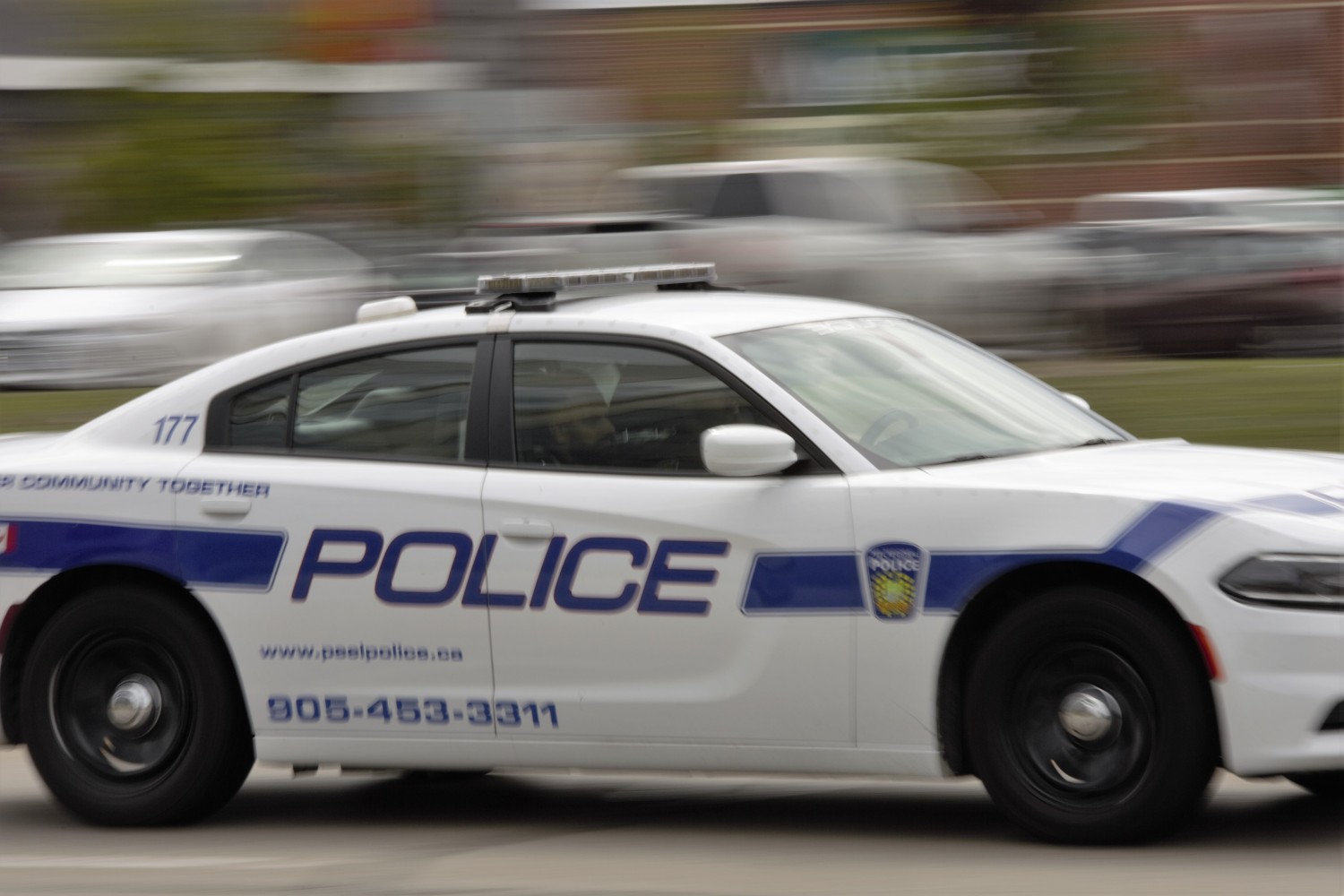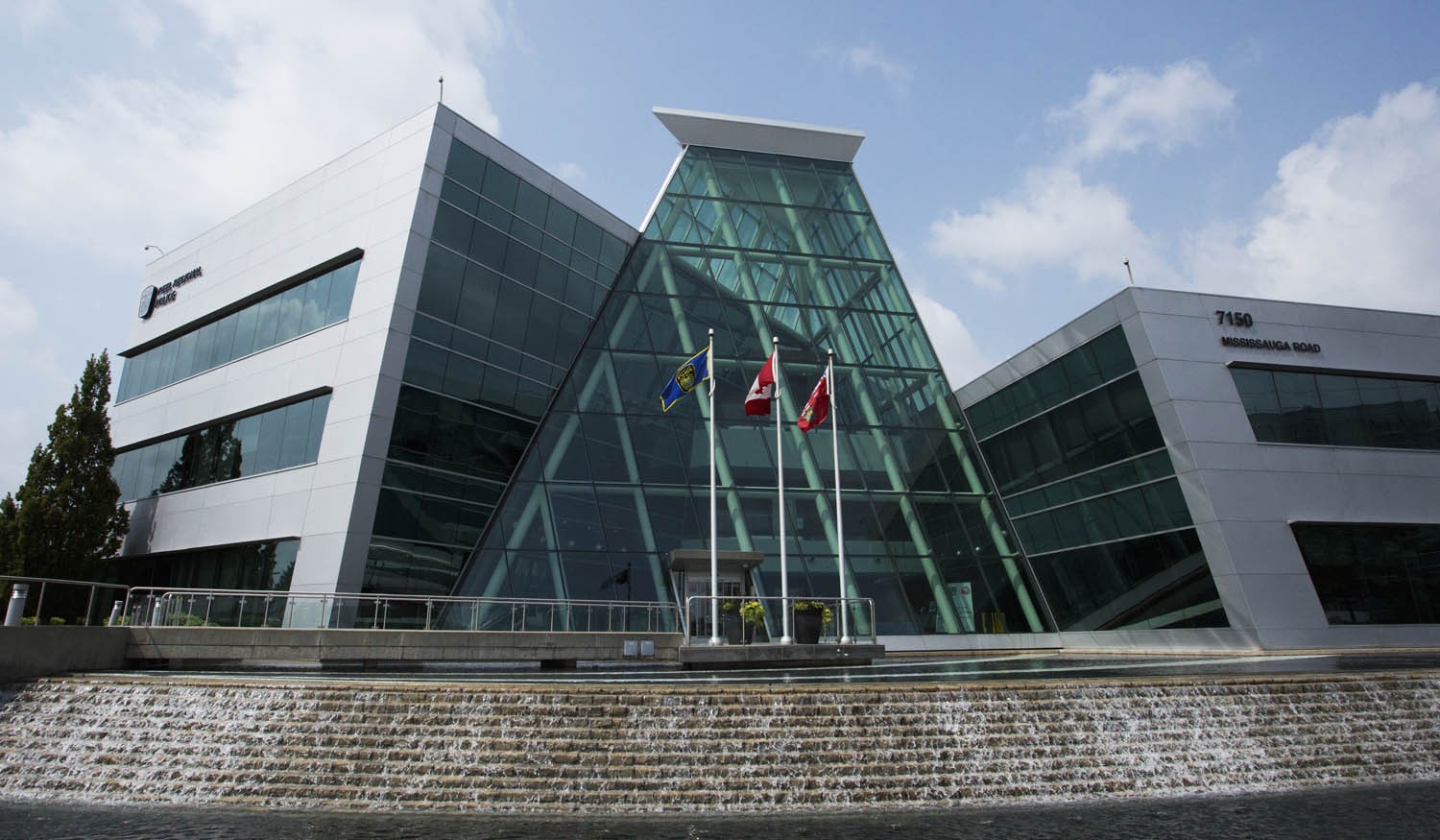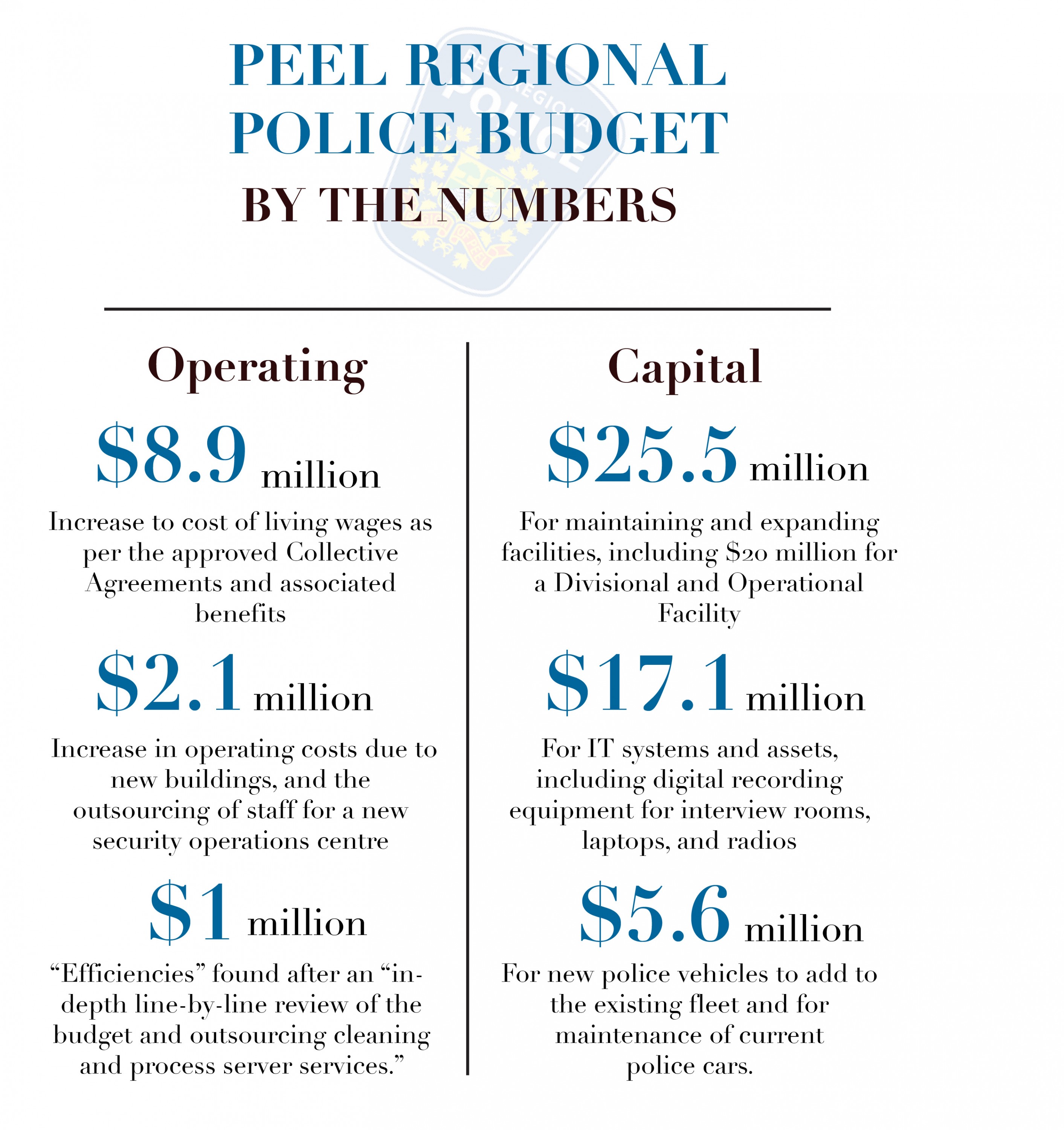
Peel police budget is in a deficit, regional council hears
The police budget is currently in a small deficit, Acting Police Chief Chris McCord told Peel Region council Thursday, while asking for a 5.6 percent increase — some $21.6 million — in the coming budget.
“Just so you know, this year we don’t have a surplus. Staff have managed their budget really, really well, and we don’t have a surplus. In fact, we have a very very small deficit,” McCord told Mississauga Regional Councillor Karen Ras.
McCord hopes to see the police budget increase from $401.5 million to $423 million. The biggest single item in the increase request is to cover salaries and benefits, about $8.9 million.

Peel Police headquarters in Mississauga
The deficit issue came up in response to Ras’s questions about the PRP’s working reserve fund, a sort of rainy-day fund that McCord said the force will be dipping into to pay for certain projects. Ras wanted to know how the police would proceed if the fund were depleted. McCord, rather bleakly, said the deficit presents a difficulty.
“Moving forward, we have a year to work out how we’re going to do that (fund the initiatives).
The projects in question are funded by $17.9 million in grants from the provincial Ministry of Community Safety and Correctional Services. Some of the grant contracts have expired or are due to end, including the Community Policing Partnership and the Safer Communities-Thousand Officers Program. A grant for Court Security and Prisoner Transport has expired. The Safer Communities initiative was created to add 1,000 officers across Ontario. The Community Policing Partnership provides for enhanced traffic-enforcement capabilities and school outreach programs, and the province funds court security and transport.
According to McCord, there’s about $18 million in the working reserve at present, enough to sustain the programs for one year before the reserve is fully depleted.
Mississauga Regional Councillor Pat Saito, who grilled McCord on the issue, expressed concern about what appears to be a precarious financial situation for police. She wondered aloud how they “can still provide those programs without impacting the 2020 budget?”
The acting chief responded vaguely that using reserve funds “gives us time to do that (explore ways to fund the projects) ... We’d be advocating to get that money.”
One major pressure on the police budget is the high salaries of uniformed police, which have risen steeply under collective agreements in recent years. A first-class constable, who achieves that rank after a three-year probation period (or less) can expect to earn $100,420 per year under the contract that came into effect this year. Compensation can rise to as high as $117,491 when premiums, pension contributions and benefits are factored in. In Ontario an applicant only needs a high school diploma to enter police training to join a municipal police force.
In 2006, the salary for a constable was roughly $71,000 per year. Remuneration has risen by 41 percent since then; 61 percent when premiums and benefits are included.
The PRP’s presentation to regional council showed that salaries and benefits compose 91.5 percent of the current net budget of $401.5 million. That leaves very little for things like acquiring new tools and technologies to modernize the police force, especially in an environment where cannabis legalization represents a new frontier in Canadian policing. The chart below lists some of the proposed costs in the 2019 budget.

The Pointer asked Brampton Mayor Patrick Brown— who sits on the Peel Police Services Board— about whether he will be looking at police salaries. He did not respond to the questions by publication time.
The police delegation focused heavily on asking the council for 55 additional officers to patrol the streets of Peel, in response to a recent increase in violent crime. As things stand, the number of police officers in proportion to Peel’s population is well below the provincial average.
The PRP’s own data — from 2017, as 2018 numbers are not available — presented to council says that there are 137 uniformed officers per 100,000 people. The province averages 188 police officers per 100,000, and Toronto has 189.
The highest proportion on McCord’s list is Montreal, which has 228 officers per 100,000 people. It should be noted that Peel Police did score a high solvency rate, about 72 percent, meaning Peel police were able to solve a higher proportion of violent crimes than most of the large police services across the country.
Submit a correction about this story


